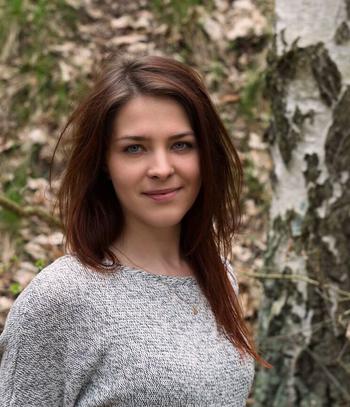Dr. Julia Gravendyck

Institute of Geologie
Sedimentology, Stratigraphy, and Palynology Group
PhD Candidate
Awards
- 2018 - Best Teacher Award (1000€) - Biology Department awarded by the FSI Biology at the FU (https://www.bcp.fu-berlin.de/studium-lehre/Qualitaetssicherung/Preis-fuer-gute-Lehre/index.html)
- 2018 - Best Oral Presentation (400€) at the Havel-Spree-Colloquium awarded by the DCPS (https://www.biologie.hu-berlin.de/en/gruppenseiten-en/plantphys/havel-spree-colloquium-2018)
Funds
- Mar 2019: Innovative Teaching Fund (1000€) for a Photo-Competition conducted in my Botany Classes
- Nov 2018: Travel Fund of the female promotion pool of the FU to attend the Linnean Society Paleaobotany Meeting in London | UK.
- Aug 2018: Travel Fund of the female promotion pool of the FU to attend the European Paleobotany and Palynology Conference (EPPC) 2018 in Dublin | Ireland.
- Aug 2018: Travel Fund of the female promotion pool of the FU to attend the 51st Annual Meeting of the AASP - The Palynological Society in Calgary | Kanada.
Memberships in Scientific Administration
- since 2018 Student Director-at-Large of the AASP - the Palynological Society | Tasks: representing student interests on the Board; general Board duties; aquiring funds and organizing Early Career Events during the Annual Meetings of the AASP
- since 2018 PhD-Student Representative in the selection panel of the BBIB Graduate Program "Biodiversity, Evolution and Ecology"

sitting on the Permian/Triassic Boundary during fieldwork in Armenia in 2017
Curriculum Vitae
- since March 2017: PhD student in the Bachelier Group at the Freie Universität Berlin (FU), DRS/BBIB in cooperation with the Kürschner Group at the University of Oslo (UiO)
- 2017: Master thesis project in cooperation with the GFZ Potsdam and the Natural History Museum Berlin "Late Triassic (Carnian) Palynofacies & Palynology of the Core ‘CO2 Ktzi 201/2007’, from the Pilot site ‘CO2-Sink’ in Ketzin, Germany"
- 2015-2017: MSc in Biology (specializing in Biodiversity) at the Freie Universität Berlin
- 2011-2016: teaching assistant (tutor) at the Institute for systematic botany and plant geography (Hilger Group)
- 2010-2015: BA in English and Biology with teaching option at the Freie Universität Berlin
Links:
- BBIB - Berlin-Brandenburg Institute of Advanced Biodiversity Research: https://www.bbib.org/home.html
- BBIB Graduate Program: https://www.bbib.org/graduate-program-biodiversity-evolution-and-ecology.html
- DRS - Dahlem Research School: https://www.fu-berlin.de/en/sites/drs/index.html
Upcoming
-
Past:
SuSe 2019: Evolution of Diversity of Animals/Plants (Botany Part)
WiSe 2018/2019: NATürlich Workshop - Students meet Scientists ("Paleopalynologie: Pal...what? - How to reconstruct the past and predict the future with fossil pollen and spores")
WiSe 2018/19: Plants and Society (1 Day Melisso-, Forensic, and Paleopalynology Workshop)
WiSe 2018/19: Botany and Biodiversity (Practical Courses)
SuSe 2018: Evolution of Diversity of Animals/Plants (Botany Part)
WiSe 2017/18: Plants and Society (Melisso-, Forensic, and Paleopalynology Workshop)
WiSe 2017/18: Botany and Biodiversity (Practical Courses C, D, F)
SuSe 2017: Evolution of Diversity of Animals/Plants (Botany Part)
My research comprises the analysis of Mesozoic Palynofloras focussing on the Triassic and Triassic/Jurassic transition. My research is based on standard palynofacies and palynology methods to conduct environmental and vegetation reconstructions.

Synangium with remains of released spores of Angiopteris sp. (Marratiaceae)
I have a particular interest in systematics, biology and ecology of Mesozoic floras and try to explore them with new microscopy techniques to get a better understanding of existing morphotypes which were described by classical light and electron microscopy in order to reevaluate their temporal and spatial distribution.
The PhD-Project ist conducted together with supervision of Prof. Wolfram Kürschner - from the University of Oslo - focusing on the theoretical content of the project, while Prof. Bachelier from the Freie Universität Berlin supervises the methodological/microscope part of the project. On top of that the project is conducted in collaboration with Dr. Clément Coiffard and Dr. Martin Aberhan from the Berlin Natural History Museum - https://www.museumfuernaturkunde.berlin/de/wissenschaft/untersuchung-der-palaeontologischen-und-geochemischen-belege-des-massenaussterbens-am.
- Gravendyck, J., Bachelier, J., Heunisch, C, 2019. A biography and obituary of W.H. Eberhard Schulzu (1931-2017). Palynology. Published online: https://doi.org/10.1080/01916122.2019.1620894.
- Schobben, M., Gravendyck, J., Mangels, F., Struck, U., Bussert, R., Kürschner, W.M., Korn, D., Sander, P.M., Aberhan, M., 2019. A comparative study of total organic carbon-δ13C signatures in the Triassic–Jurassic transitional beds of the Central European Basin and western Tethys shelf seas. Newsletters Stratigr. 1–26. https://doi.org/10.1127/nos/2019/0499.

